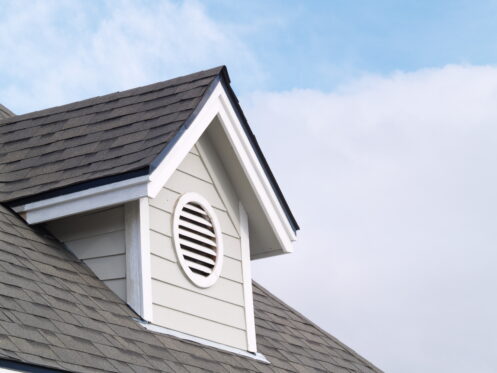The more your AC unit struggles, the higher your energy bills will climb. But there’s a fix that doesn’t start at your thermostat. With proper roof ventilation, you can let the heat escape before it spreads. At Evenhouse Roofing, in Davenport, IA, we help homeowners improve ventilation systems that often go unnoticed but quietly save you money every season.
Trapped Heat Starts a Chain Reaction
When heat builds up in your attic, it doesn’t just stay there. The temperature in that space can climb well above 120 degrees on a summer day, and without a way to release it, that heat radiates downward into your living areas. You might notice your upstairs rooms staying stuffy no matter how long the air conditioner runs. That’s because the insulation in your attic can only do so much when it’s constantly surrounded by overheated air.
Your air conditioner works against that heat instead of cooling your space efficiently. The system stays on longer, cycles more frequently, and burns more electricity than it would in a cooler house. A vented attic lets heat rise through the roof rather than seeping into your ceilings. With proper airflow, you slow the chain reaction. You stop paying for air conditioning that never quite wins the battle upstairs.
How Moisture Complicates Cooling
While most people focus on temperature, humidity plays a big role in how hard your AC unit works. When air stagnates in an attic, moisture from your home builds up in the insulation and wood framing. That moisture doesn’t always make itself obvious. You won’t necessarily see a leak or feel water dripping. Instead, it lingers in the air and materials, making your house feel muggy and harder to cool.
Even a few degrees of trapped heat mixed with higher humidity can add hours of extra work for your cooling system every week. The attic turns into a slow-release heat source, especially when holding damp air that should’ve been vented. If you’ve ever walked into your home and thought it felt warmer than your thermostat showed, this kind of trapped attic moisture could be one reason why.
Balanced ventilation creates a path for moisture to escape before it becomes a problem. You don’t need to install anything fancy inside of your house; rather, you just need airflow at the top of it. When the attic stays dry, your living spaces remain cooler without the system constantly running behind.
Ridge Vents, Soffits, and the Role They Play
A solid roof ventilation system usually relies on two parts working together. Soffit vents, located under the eaves, pull in cooler outside air. Ridge vents, or other exhaust points, let the hot air escape near the top of the roof. This setup works like a passive engine. Heat rises, pulls fresh air in below, and moves stale, warm air out through the top. No motors or electronics are needed.
Everything slows down if one side of that system is missing or blocked, though. You might have ridge vents that look fine from the outside, but they don’t move air because the insulation is packed too tightly underneath. Or maybe your soffits are painted shut, leaving no room for fresh air to enter. Either way, your attic holds onto heat that should’ve exited naturally.
It’s worth checking that both intake and exhaust vents are present and unobstructed. Some homes were built with vents but never had the internal airflow cleared properly. Others might’ve had changes over the years that blocked what used to be working openings. When airflow through your attic stops, your energy bills climb without warning.
Lowering Your Bills by Letting Air Do the Work
You might not immediately connect roofing to energy savings. Most people focus on HVAC upgrades, better windows, or smart thermostats when they try to lower energy costs. But your attic plays a huge part in your overall comfort and how much power you use. By simply allowing hot air to escape, you reduce the strain on every system below.
Proper ventilation doesn’t just protect your roof materials. It also takes pressure off of your air conditioner, which means fewer repairs, a longer system lifespan, and lower bills throughout the summer. You don’t have to wait until your air conditioner breaks or your electric bill spikes to take action. Ventilation might be missing if your attic feels like a sauna or your second floor refuses to cool evenly.
Protect Your Health Through Your Roof Now
A well-ventilated roof doesn’t just protect your shingles or keep mold at bay. It also helps your home breathe easier and keeps your energy bills from worsening when the weather gets rough. If you’ve been wondering why your AC unit never catches up or why your attic feels like a furnace, it might be time for a ventilation check with Evenhouse Roofing.
We also offer roof inspections, repairs, and replacements, storm damage repairs, and gutter installations to protect your home from top to bottom. Call us today for more information or to schedule a roofing appointment.
